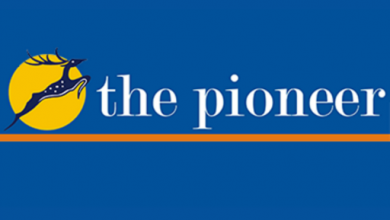Inflation and The gati shakti plan

Tuesday, 19 October 2021 | Shivaji Sarkar
The rising global fuel prices and a domestic policy of high taxation is a major concern
The Gati Shakti plan is aimed at coordinating infrastructure schemes of various Central Ministries and State Governments to ensure quick and efficient completion of works. It was perhaps a long-term need for a nation that is on booster doses of revenue injection through borrowings to push growth. Gati plan would try to help in timely implementation of projects through coordination of 16 Central Government departments and avoiding duplication for cutting costs. The new plan is stated to check the expenses on different projects but not check galloping inflation. Though food prices were in check for about eight months, the latest reports suggest that food and vegetable prices are shooting up in many areas. Industry department data say that certain food items’ contraction has brought down food inflation to 4.69 per cent in September. During the same time, manufactured products’ prices soared to 11.41 per cent from 11.39 per cent in August. Pulses rose 9.42 percent and in October, onion and fruit prices have started soaring. Food prices are not decelerating across the board. In the manufactured category, prices of basic metals rose to 26.71 per cent and textiles remain elevated at 26.09 per cent. Interestingly enough, activities in different sectors have not yet picked up the pace needed to give the desired effect. A major reason is the rising global fuel prices and a domestic policy of high taxation on petroleum products, a concern expressed by RBI. Overall, inflation also pushes up wages and other costs. Global fuel prices have started firming up now with an increase in demand. India takes a double hit as a result. Food grain doles are keeping the prices in check to a certain level. However, as activities increase so do domestic demand.
This is what a coordination committee has to look at. With crude prices hovering around $80 a barrel and likely to firm up further, the inflation scenario may become grim. Whether the Gati-Shakti plan, using geo-mapping and real-time data, can check rising prices would be interesting to observe. Pressures like rising wage and transportation costs could increase further. The Bloomberg commodity index crossed 100 in the last week of September, first time since 2015, and continues to stay at that level. Prices of coal and crude oil have risen. The RBI’s monetary policy committee expects inflation to start increasing from the October-December quarter onwards. The WPI inflation is to rise, the MPC forecasts. Technically measured by consumer price index (CPI), inflation is at a low. It grew at 4.35 per cent, but overall, it has come down by 195 basis points. Inflation also impacts purchasing power. Consumers are yet not flocking to the market. Sales are not increasing. Many units are unable to transfer the additional costs on fuel to the consumers. Even the truckers face this problem. They cannot let their fleet remain idle. So even at lower prices they agree to transport goods. Another aspect is a kind of stagnation in income levels and in some cases even rising income is not seeing the end of poverty. There is concern about inequality-driven inflation. While the Gati Shakti has raised high hopes of completing projects within the budgetary expenses, to give pace to it, another master plan to check inflation is needed. The administered prices of petroleum products along with the higher cost on road travel also have to be seen from the aspect of coordination. Coordinated pricing is key to the success of the Prime Minister’s new master plan. At lower fuel prices, there would be more activities, more revenue generation and the aim of the NDA Government to have an overall development could be achieved.
(The writer is a senior journalist. The views expressed are personal.)





